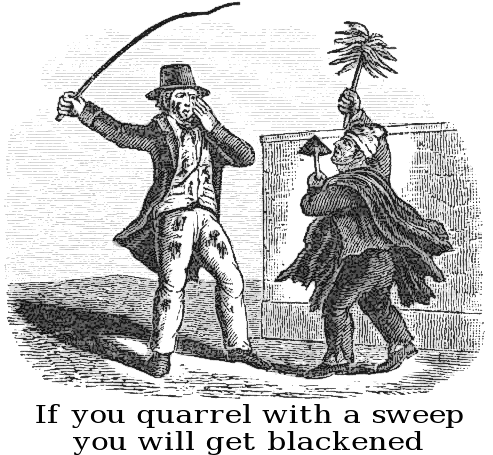
I'm back from visiting Columbia, Missouri and the Hint Fiction Art Show (well, I actually came back earlier this week), but before I do a post about all of that I want to talk about the different kinds of reviews out there in this crazy world wide web of ours.
First, though, I want to preface this by saying that whenever a reader takes time out of their busy life to read something of yours and then spends the extra time telling others about it on their blogs or Twitter feed or Amazon or whatever, no matter if it's positive or negative, you as a writer have to be appreciative. Obviously we would love for everyone to enjoy our stuff and sing our praises, but the simple truth is that you can't please everybody all of the time.
Now, with that out of the way, it seems there are two kinds of reviews you find on the Internet: the reader review and the critical review.
The reader review is just what it sounds like. When your every day reader reads something and talks about it on Twitter or Facebook or posts a review on Goodreads or Amazon or something like that. They aren't an actual "reviewer" ... though then again maybe they are. In fact, I know they are. It's like asking what's the true definition of a writer -- someone who writes. Sure, some can argue that you need to be published or have some kind of degree or whatever, but then that opens another can of worms and ... well, you get the idea. Just as someone who writes can be considered a writer, someone who reviews can be considered a reviewer.
That, however, doesn't always mean their reviews are helpful. Oftentimes you'll see Amazon reviews that give a book such glowing praise as to say "This is the best book I've ever read!!!!!!!!" and you have to pause and think, Really? Was this really the best book you ever read? And then you have the one-star reviews from people who say something like "I didn't care for the main character's first name" and those kind of reviews can of course be easily dismissed.
But every so often you do come across Amazon reviews that are thoughtful enough to let you know the reader really spent time with the book in question and, despite whether or not they liked it, is giving the book a fair shake. These reviews strive toward what we'll call the critical review, which doesn't necessarily need to come from such a prestigious place as the New York Times ... though that can always be helpful.
The Internet has made it possible for the "book blogger" to rise up out of the ashes of obscurity and become well-respected. Then again, this isn't necessarily a good thing for all involved. Because anybody who has a blog can become one of these reviewers, and the reviews range from anywhere between the reader side to the critical side.
Even with this in mind, though, there still needs to be some professionalism maintained with these critical reviewers. Case in point:
Last year when the Hint Fiction anthology was released I came across an early review that ... wasn't so hot. Basically, the review didn't care much for the book. Which is fine -- everyone is of course entitled to their own opinions after all -- but what wasn't really fine is the fact the reviewer continuously misspelled my last name (I'm sure you can guess how it was spelled) and even went so far as to mess up some of the story titles from the book. The anthology's split up into three pretty easy to remember sections, and even those titles were messed up in the review.
So here we have a book blogger who's trying to move away from being a reader reviewer to becoming a critical reviewer but then makes clumsy missteps like this and expects to be taken seriously?
The reason I bring this up is earlier this week Hellnotes reviewed The Calling and gave it a somewhat positive review (important note: the review contains some major spoilers; like, the plot of the entire book is given away in the review). One line in particular -- "This novel is small town horror at its best" -- makes for a great blurb, so I'm happy. Still, there are some things about the review itself (besides giving away the entire plot of the novel) that sort of ... worry me as the writer of the work.
The biggest issue I have is that the reviewer refers to the main antagonist as Sammael when, in the novel, it's Samael. A major deal? Not really, I guess, though, on a lark, I went and did a quick search of the document and the name appears 68 times, which is more than enough times to be properly spelled in a review, I'd think.
The reviewer had certain issues with the plot of the book, which is completely understandable on my end. I don't expect everyone to love my characters or the plot or the tension or whatever else. Someone is bound to have issues with something. (Again, as long as the book gets a fair shake, the reviewer can completely blast the work for all I care; at least then I know that they actually read it.) But here the reviewer goes on with this line (which is a big spoiler, btw):
"Sammael reveals Chris’ family history and that his parents (and grandfather, to be more exact) weren’t exactly the paragons of virtue."
Now here's the thing: while Samael does, at the end of the book, mention this, Chris actually learns about his family history on his own near the middle of the book. And his parents, while murdered, were completely innocents in everything that happened with no knowledge of the family history. Even Chris's grandfather didn't have much to do with anything (it was Chris's great grandfather and his great grandfather's friends who did something long ago and which caused a curse on the families, though what they had done at the time was in fact quite heroic).
So that's one thing.
And then here's another thing (again, major spoiler):
At the end of the novel, Chris begins having dreams or visions just like Joey. He wakes one morning and knows he has go to Boise, Idaho because thirteen people are going to die. The number is never the same, as neither is the place. Even in the epilogue, Chris is asked and responds with the place and number. But still the reviewer says this (the bold is mine):
"I understood why Chris’ new role involves saving thirteen people in every town ..."
But, like I explained, it's not in every town. Just that one.
As you can imagine, I'm a little confused on how to take this review. Again, it's somewhat positive and gives that great line for a blurb, so on the one side it's a plus, but then the reviewer gives basically the entire plot away and seems to misunderstand a few possibly crucial parts of the book. Because then it makes me wonder what else was possibly misunderstood.
Then again, maybe I didn't do my part right as the author in question if there were such issues on the reader's end ... though, as far as I can tell, this is the first time I've heard of such issues.
So anyway, reader reviews and critical reviews.
Sometimes they're different, sometimes they're the same.
Sometimes they're good, sometimes they're bad.
Whatever the case may be, we always have to be thankful that someone took time out of their busy day not only to read a few words we wrote, but to then in fact write about those words.
Even if they do sometimes remember the book differently than how it was written.
 So there was this survey recently that states "One in Six Americans Now Use E-Reader with One in Six Likely to Purchase in Next Six Months."
So there was this survey recently that states "One in Six Americans Now Use E-Reader with One in Six Likely to Purchase in Next Six Months."







